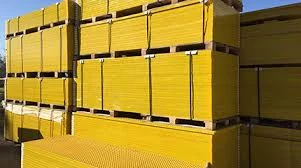
-
 Afrikaans
Afrikaans -
 Albanian
Albanian -
 Amharic
Amharic -
 Arabic
Arabic -
 Armenian
Armenian -
 Azerbaijani
Azerbaijani -
 Basque
Basque -
 Belarusian
Belarusian -
 Bengali
Bengali -
 Bosnian
Bosnian -
 Bulgarian
Bulgarian -
 Catalan
Catalan -
 Cebuano
Cebuano -
 China
China -
 China (Taiwan)
China (Taiwan) -
 Corsican
Corsican -
 Croatian
Croatian -
 Czech
Czech -
 Danish
Danish -
 Dutch
Dutch -
 English
English -
 Esperanto
Esperanto -
 Estonian
Estonian -
 Finnish
Finnish -
 French
French -
 Frisian
Frisian -
 Galician
Galician -
 Georgian
Georgian -
 German
German -
 Greek
Greek -
 Gujarati
Gujarati -
 Haitian Creole
Haitian Creole -
 hausa
hausa -
 hawaiian
hawaiian -
 Hebrew
Hebrew -
 Hindi
Hindi -
 Miao
Miao -
 Hungarian
Hungarian -
 Icelandic
Icelandic -
 igbo
igbo -
 Indonesian
Indonesian -
 irish
irish -
 Italian
Italian -
 Japanese
Japanese -
 Javanese
Javanese -
 Kannada
Kannada -
 kazakh
kazakh -
 Khmer
Khmer -
 Rwandese
Rwandese -
 Korean
Korean -
 Kurdish
Kurdish -
 Kyrgyz
Kyrgyz -
 Lao
Lao -
 Latin
Latin -
 Latvian
Latvian -
 Lithuanian
Lithuanian -
 Luxembourgish
Luxembourgish -
 Macedonian
Macedonian -
 Malgashi
Malgashi -
 Malay
Malay -
 Malayalam
Malayalam -
 Maltese
Maltese -
 Maori
Maori -
 Marathi
Marathi -
 Mongolian
Mongolian -
 Myanmar
Myanmar -
 Nepali
Nepali -
 Norwegian
Norwegian -
 Norwegian
Norwegian -
 Occitan
Occitan -
 Pashto
Pashto -
 Persian
Persian -
 Polish
Polish -
 Portuguese
Portuguese -
 Punjabi
Punjabi -
 Romanian
Romanian -
 Russian
Russian -
 Samoan
Samoan -
 Scottish Gaelic
Scottish Gaelic -
 Serbian
Serbian -
 Sesotho
Sesotho -
 Shona
Shona -
 Sindhi
Sindhi -
 Sinhala
Sinhala -
 Slovak
Slovak -
 Slovenian
Slovenian -
 Somali
Somali -
 Spanish
Spanish -
 Sundanese
Sundanese -
 Swahili
Swahili -
 Swedish
Swedish -
 Tagalog
Tagalog -
 Tajik
Tajik -
 Tamil
Tamil -
 Tatar
Tatar -
 Telugu
Telugu -
 Thai
Thai -
 Turkish
Turkish -
 Turkmen
Turkmen -
 Ukrainian
Ukrainian -
 Urdu
Urdu -
 Uighur
Uighur -
 Uzbek
Uzbek -
 Vietnamese
Vietnamese -
 Welsh
Welsh -
 Bantu
Bantu -
 Yiddish
Yiddish -
 Yoruba
Yoruba -
 Zulu
Zulu
anchoring, drilling rods, and bits for efficient and precise ...
Anchoring, Drilling Rods, and Bits for Efficient and Precise Performance in Geotechnical Engineering
In the realm of geotechnical engineering, the importance of anchoring systems, drilling rods, and drill bits cannot be overstated. These components play a critical role in the exploration and stabilization of soil and rock, enabling engineers to execute projects safely and with precision. As the construction industry continues to evolve, the demand for efficient and precise drilling solutions has led to significant advancements in technology and materials.
Anchoring Systems
Anchoring is a fundamental aspect of construction, particularly in projects involving deep foundations and slope stabilization. Anchors are utilized to provide lateral support and stability to structures, ensuring they can withstand various forces, including wind, seismic activity, and soil movements. Modern anchoring systems, such as helical anchors and soil nails, offer exceptional load-bearing capacities and are designed for various soil conditions.
Helical anchors, for instance, consist of metal shafts with helix plates attached, which allow for easy installation and provide immediate load-bearing capabilities. These anchors can be installed in tight spaces with minimal disturbance to the surrounding environment, making them ideal for urban construction projects. Furthermore, the use of corrosion-resistant materials in anchor construction ensures long-term performance and reduces maintenance costs.
Drilling Rods
Drilling rods are essential components that connect the drilling rig to the drill bit. They transfer torque and hydraulic energy from the surface to the bit, allowing for efficient penetration of soil and rock. The design and material composition of drilling rods have a significant impact on the overall efficiency of the drilling process.
Today’s drilling rods are often made from high-strength steel or composite materials that enhance durability and reduce wear during drilling operations. The advancements in manufacturing techniques, such as heat treatment and surface coating, have also contributed to the performance enhancements seen in modern drilling rods. These innovations lead to reduced downtime and increased productivity on job sites.
anchoring, drilling rods, and bits for efficient and precise ...

Particularly in geotechnical applications, the use of drill rods designed for specific soil conditions can greatly enhance the precision of drilling. For instance, in challenging subsurface conditions, modular drill rods allow for easy adjustment of length and connectivity, ensuring that the rig can adapt to varying requirements without disrupting workflow.
Drill Bits
The drill bit is arguably the most critical component in the drilling process. It is the tool responsible for breaking through the geological layers encountered during drilling. The effectiveness of a drill bit is determined by its design and material, which must be suited to the specific conditions of the project.
Innovative drill bit designs, such as tricone bits, PDC (Polycrystalline Diamond Compact) bits, and roller cone bits, have revolutionized the drilling industry. These bits are engineered to provide maximum penetration rates and durability, minimizing the risk of bit failure. PDC bits, for example, have become increasingly popular due to their ability to cut through hard rock formations efficiently, providing precise drilling with a reduced likelihood of deviation.
In addition to efficiency, the focus on sustainability is driving advancements in drill bit technology. Manufacturers are exploring eco-friendly materials and designs that reduce environmental impact while maintaining performance standards.
Conclusion
The integration of advanced anchoring systems, high-quality drilling rods, and innovative drill bits is paramount in achieving efficient and precise results in geotechnical engineering. As projects become more complex and the demand for reliability increases, these components will continue to evolve, driven by technological advancements and a commitment to sustainability. Engineers and construction professionals must remain aware of these developments to leverage the best practices and products available in the market, ensuring the successful execution of their projects while upholding safety and environmental standards.









